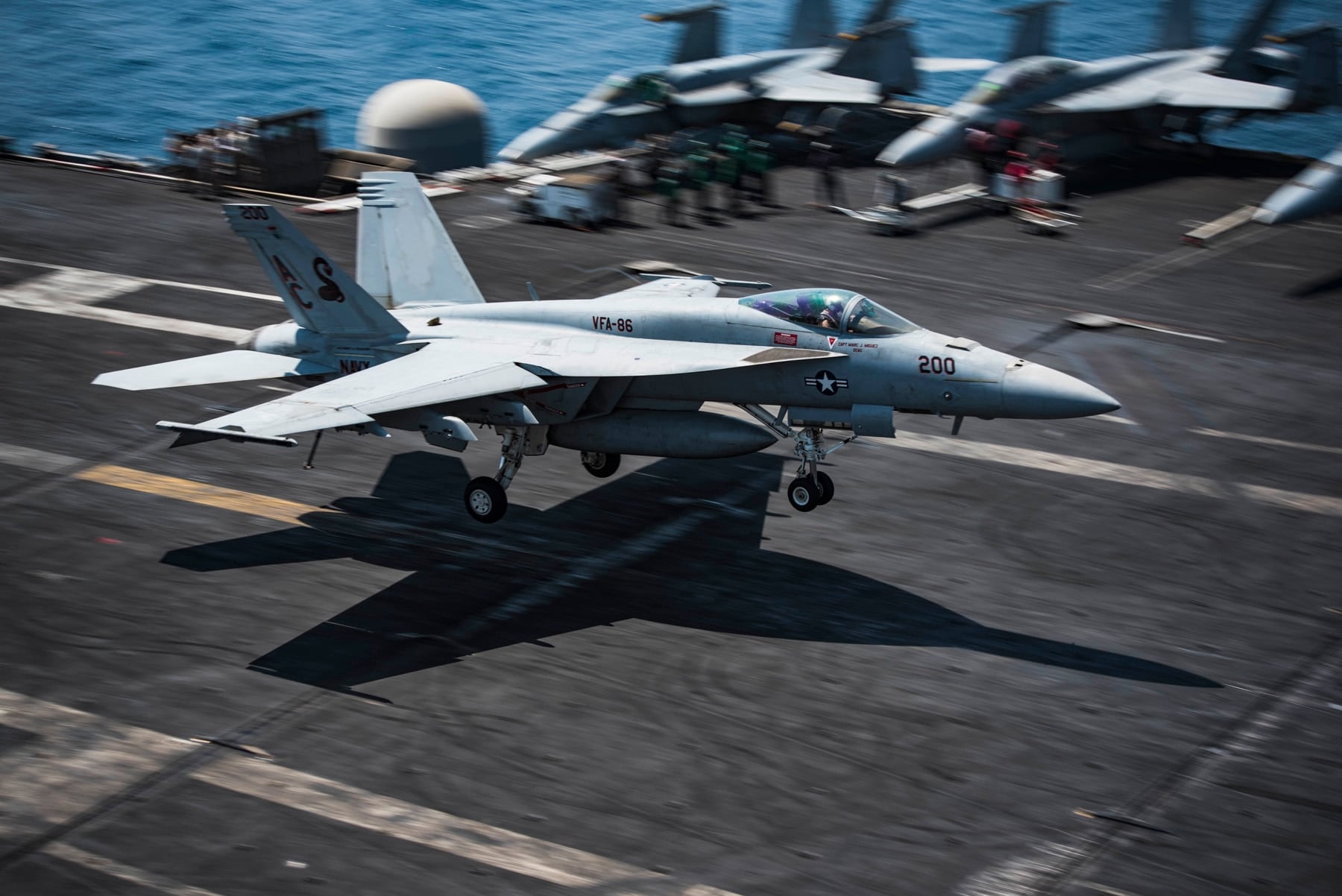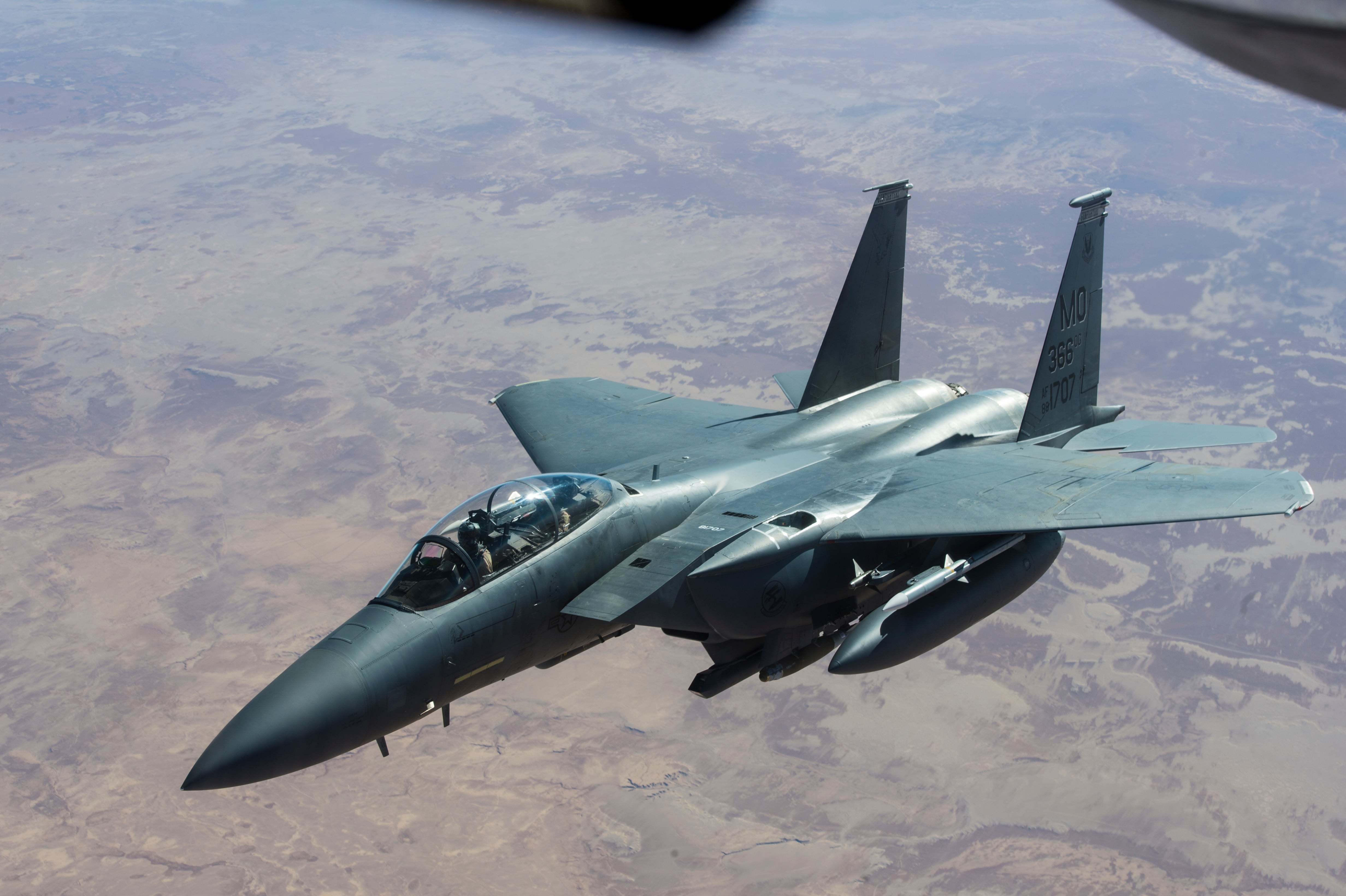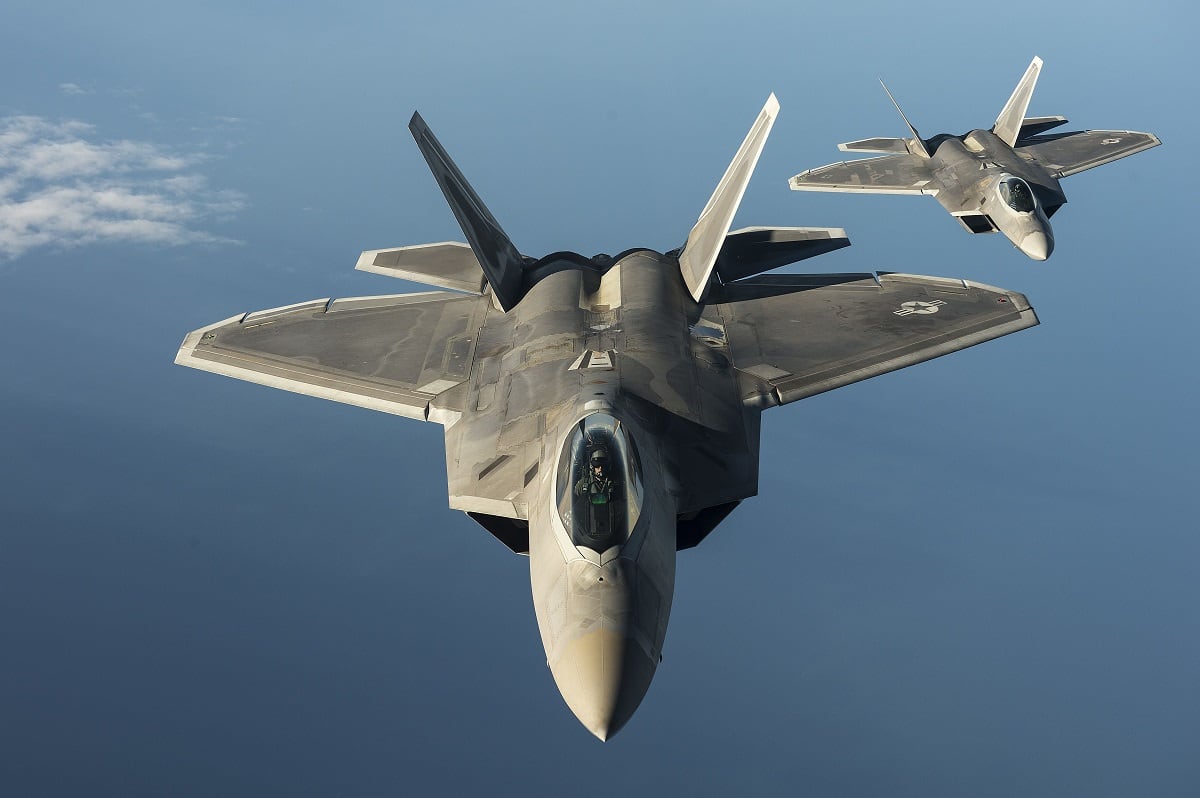WASHINGTON — Two U.S. F-22 Raptors intercepted and fired warning flares at two Russian Su-25s over the tightly congested air space in Syria along the Euphrates River on Wednesday.
The Russian fighters had crossed an agreed upon deconfliction line that runs parallel with the Euphrates River. The U.S. and its Syrian partner forces, known as the Syrian Democratic Forces, operate on the eastern side of the Euphrates, and it’s a region Russia and its Syrian regime allies are supposed to steer clear from.
“On December 13, two Russian Su-25s flew into coordinated Coalition airspace on the east side of the Euphrates River near Abu Kamal, Syria, and were promptly intercepted by two F-22A Raptors providing air cover for partner ground forces conducting operations to defeat ISIS,” said Lt. Col. Damien Pickart, a spokesman for U.S. Air Forces Central Command.
The F-22s conducted maneuvers and fired warning flares and chaff to convince the pair of Russian fighters to leave the deconflicted airspace, he said.
“At one point, one Su-25 flew close enough to an F-22A that it had to aggressively maneuver to avoid a midair collision,” Pickart said. “During the incident, a Russian Su-35 also flew across the river and was shadowed closely by one of the F-22As.”
The incident lasted nearly 40 minutes and the Russian aircraft eventually flew back to the west side of the river.
The U.S. used a special hotline designed to deconflict ground and air operations with Russian forces to convey their concern over the incident, Pahon said a spokesperson for the Pentagon said.
Despite the liberation of Raqqa in mid-October, operations along the Euphrates River and in Deir Ezzoir province continue as U.S.-backed fighters clear remnants of the Islamic State terror group from the region.
That region is still hotly contested and is also controversial because of the many lucrative oil wells that dot the landscape.
In late September, U.S.-backed Syrian fighters claimed Russian jets bombed one of their positions near a contested gas field, killing several of their forces.
The battle for control of southern Syria and the Middle Euphrates Valley has been contentious this year, and today’s provocations by Russian fighters and their allies are not the first such incident.
“Since agreeing to this deconfliction arrangement, the Russians have flown into our airspace on the east side of the river six to eight times per day, or approximately 10 percent of the Russian and Syrian flights,” Pickart said.
RELATED

During the summer, U.S. warplanes down two Iranian Shahed 129 drones that threatened coalition and partner forces in Syria. And in June, a U.S. F/A-18 Super Hornet downed a Syrian Su-22 after it dropped bombs near U.S-backed fighters in Syria.
RELATED

“The Coalition’s greatest concern is that we could shoot down a Russian aircraft because its actions are seen as a threat to our air or ground forces,” Pickart explained.
“We are not here to fight the Russians and Syrians — our focus remains on defeating ISIS. That said, if anyone threatens Coalition or friendly partner forces in the air or on the ground, we will defend them,” he added.
This article has been updated to include comments and information from U.S. Air Forces Central Command.
Shawn Snow is the senior reporter for Marine Corps Times and a Marine Corps veteran.




